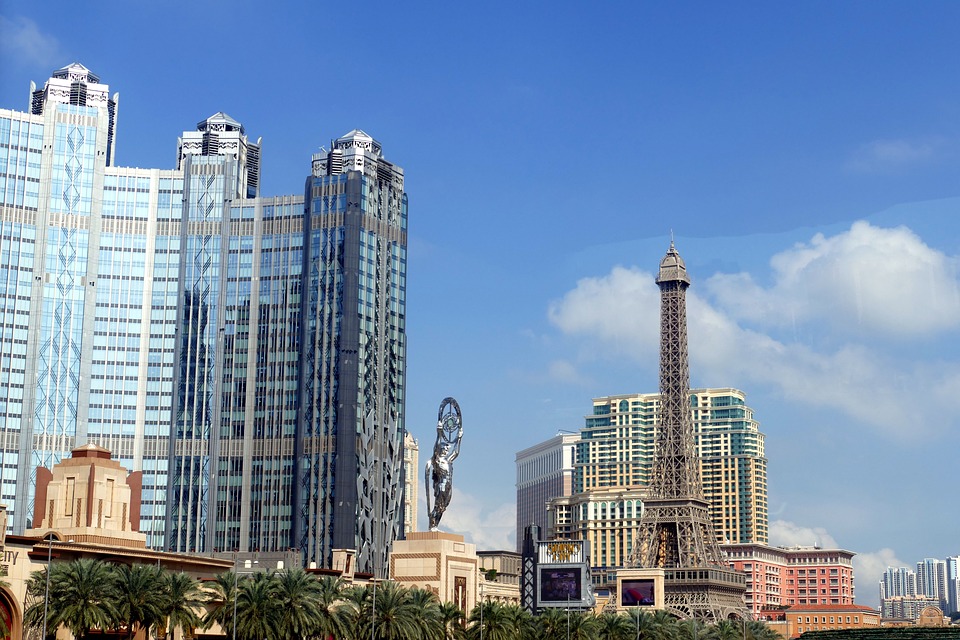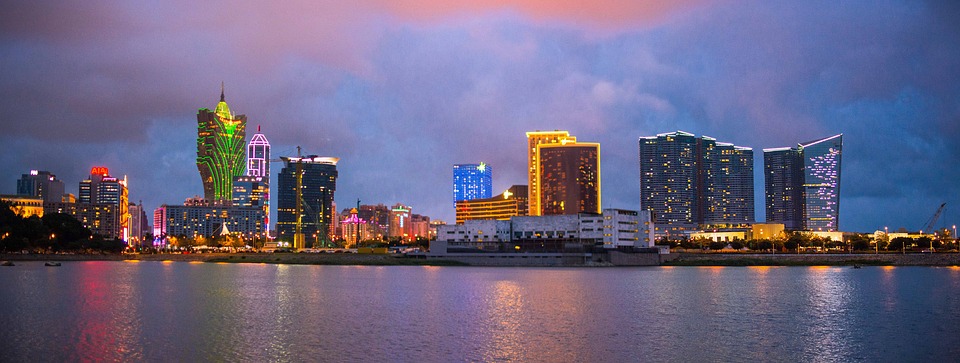Macau, like Hong Kong, is a part of China that works differently to the country proper. Once a station for Portuguese traders, Macau is now one of Asia’s largest tourist hubs, a place of bright lights and tall buildings, ancient architecture and historic villages, and, of course, miles of clean beaches befitting its sub-tropical climate. As the most densely populated place on earth though, it’s not a place anyone wants to visit without a guide.
A Modern Centre
Macau, as the “Vegas of China”, is a paradise for casino gamers. Since 2007, the peninsula has generated more money from games like roulette and baccarat than Las Vegas, and its vast fortune has increased month-on-month since late 2016. Revenues climbed 18% in March alone. What makes Macau’s casinos so interesting is just how different they are to American ones, favouring skill-based games like baccarat and poker over slots.
The latter game, poker, is growing rapidly in Macau and tables can have lengthy waiting times if not pre-booked. Tables exist at the Wynn (almost exclusively high-roller), Starworld, a casino that once had a buy-in of a million dollars, and the Venetian hotel, one of the largest buildings in the world. Given the steep price of entry for some games, joining a table in Macau can be daunting so it’s always a good idea to get some practise in at the hotel beforehand.
The availability of mobile poker apps provides both a space to learn about the game and an alternative for when the casinos are full. For example, 888poker’s Android and iOS gaming apps have much the same functionality as the company’s website, giving players the opportunity to play sit and go and multi-table tournaments. With options for money play and practise play, the experience is scalable to players’ tastes and budget.

Historic Macau
On a map, Macau stands out as a bit of an oddity; with street names like Rua de Francisco Xavier Pereira and Avenue Xian Xing Hai, it’s an amalgam of two cultures, Chinese and Portuguese. Much of Macau’s manmade beauty comes from the latter though, with the Ruins of St. Paul’s arguably the face of local tourism. It’s one of several historic churches in the city, along with St. Anthony’s, St. Josephs’, and St. Lazarus, all highly distinctive places of worship.
Taipa Village is a reason to visit Macau all on its own. An old neighbourhood far from the peninsula’s bustling centres, though just a short distance from the airport and the Venetian, Taipa is famed for its restaurants and eateries, roadside almond cookies, and the quiet tranquillity of esplanades like Avenida da Praia. It’s perhaps too quiet for fans of Macau’s nightlife (the more central Lou Lim Ieoc Garden might be a better option in that case) but Taipa is one of the more charming tourist magnets nonetheless.
Given its complex heritage, it’s perhaps no surprise Macau has a number of renowned museums, art galleries, and historic buildings, including the Macau Museum of Art, the Sir Robert Ho Tung Library, and Mandarin’s House, a UNESCO World Heritage site and the former home of reformist Zheng Guanying. For the ultimate antithesis to Macau’s casino culture though, visit the black sands of Hac Sa Beach.
A tiny place of wild contrasts, there’s nowhere quite like Macau elsewhere in the world.



